Ourense is the capital of the Ourense province and a city known for its several hot springs called Burgas. Although there is evidence showing that the area has been occupied since the Paleolithic Era, the ancient Romans were the ones who left behind some of their buildings that still resonate the power they once had over the city they called Aquae Aurente. One such structure is the Roman bridge of Ourense, which crosses the Miño River. It was built to manage river crossings and also to control access to the thermal baths, which were regarded by the Romans as healing natural entities.
Also check out our article: Day trips from Ourense

The historical district, or old town of Ourense, contains various religious buildings like the Church of Santa Maria la Madre and the cathedral, in addition to charming sidewalk cafés and the medieval Main Square, or Plaza Mayor. The old town can easily be explored in less than a day. It is hard not to fall in love with the cobblestone streets and the views of the Miño, especially from the Millennium and Roman Bridges.
Shopping is also a popular pastime and the city has the most cosmopolitan shopping scene in the province with several upscale chain stores and boutiques along Calle del Paseo and the Pont Vella Commercial Center. Ourense is a distinguished city with an elegant old town, but the real beauty of it is its proximity to other nearby, rural towns like Allariz, Verín and Ribadavia.

Driving is undeniably the best way to travel throughout Galicia. With all the rolling hills and medieval towns and bodegas, you will want to stop at different points along the way at your own pace. Most of the area is accessible by major highways that feature good signage. Just remember to keep euro in the car to pay the occasional toll. While Ourense can be walked, there is also a reliable bus system in place that can transport you to almost anywhere in the city, as well as the thermal baths along the Miño. Here is what to see and eat in Ourense, Galicia.
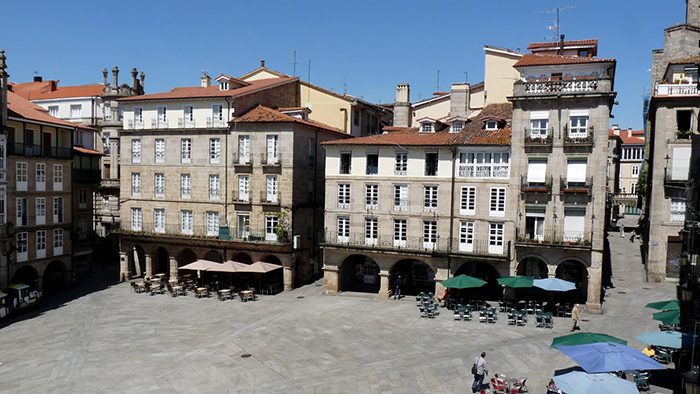
As with most main squares in Spain, Ourense’s Plaza Mayor has been the center of city life for centuries. And although it is no square at all but actually rectangular in shape, it is the literal heart of the city and a great starting point from which to explore the antique streets and nearby historical attractions. It is home to the ayuntamiento, or town hall, as well as other elegant 18th and 19th century buildings.
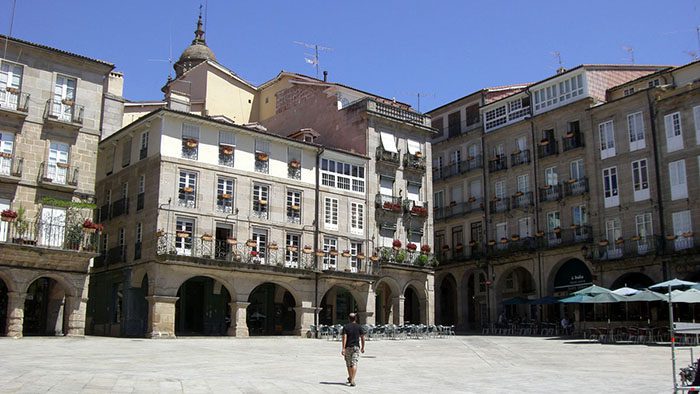
The 11th century Church of Santa Maria is situated at one end of the plaza with the Baroque-style Archaeological Museum at the other end. Breezy arcades provide shelter from the sun and rain, as well as great vantage points for people watching and panoramic photographs of everyone on their daily errands. The Plaza Mayor is the heart of the city in every sense of the word. It is where people have their daily coffee, meet friends from past and present and where the latest gossip is overheard. A flea market is held here on the first Sunday of every month with people selling everything from mirrors and books to religious statues and antiques. It takes about 10 minutes walking to reach the Plaza Mayor from Gran Hotel San Martín.

To seek refuge from the chilly, wet winters of Galicia, locals flock to a series of thermal baths, pools and springs in and around the center of Ourense. They are natural spas that form the Ruta Termal, the city’s main attraction. The thermal waters of Ourense are packed with minerals and naturally occurring elements such as alkaline, lithium and fluorine. Hydrotherapy is a widely accepted form of treatment for the reduction of stress on muscles and to increase blood flow. People around the world also swear by the effects of thermal water on their skin ailments. From Jordan to Costa Rica, thermal springs occur on every continent on Earth and their healing properties have been taken advantage of for thousands of years. The best part of the thermal baths in Ourense is that all but three are completely free!
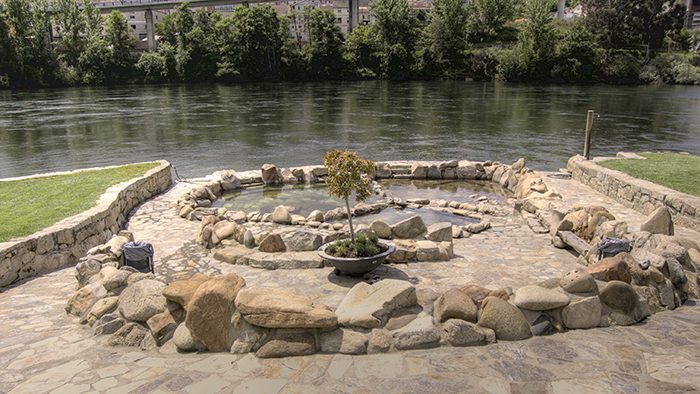
There are nine stops along the Thermal Route with most located on the banks of the Miño River and two in the old town of Ourense. A train is available to transport visitors to the Thermal Route. It departs from Plaza Mayor and stops at other attractions on its way to the Outariz Thermal Station (route L19.) A one-way trip on the train costs €0.75. The train schedule varies according to season, but generally departs Plaza Mayor at 10 a.m., 12 p.m., 4 p.m., 6 p.m. and 8 p.m. everyday except in low season, during which it is only available Monday through Friday.
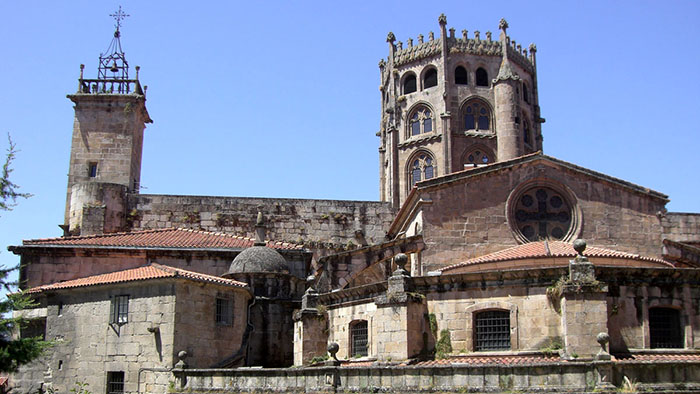
As was the case in most Spanish towns during the medieval era, the daily life and culture of Ourense’s community centered on the church and the Christian traditions of the time. The San Martiño Cathedral stands proudly in Plaza del Trigo in the old town as a testament to Ourense’s Catholic heritage. It is a Romanesque building constructed in the shape of a cross. Its façade is characterized by an ornate portico, known as Portico Del Paraiso, depicting Saint Martin and a 13th century clock tower. Inside, there are multiple chapels, of which the most extravagant is the 16th century baroque-style chapel dedicated to Jesus Christ.
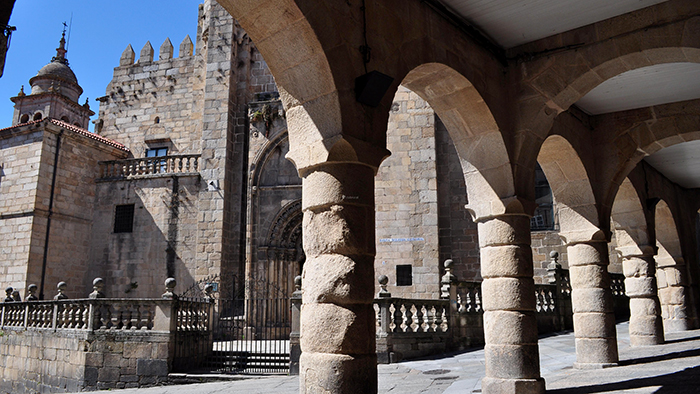
The San Martiño Cathedral sits atop the site of an ancient 6th century Seuvian (Germanic) basilica and features several architectural styles including Gothic and Renaissance. It is a national monument reminiscent of the grandiose cathedral at Santiago de Compostela, although not nearly matched in size and detail. Visitors can enter the cathedral for €1 and stop at each of the chapels. There is also an onsite museum inside the Gothic cloister displaying antique religious texts, 10th century chess pieces, religious art and jewelry. Admission to the museum is €2. The cathedral museum is open Monday to Saturday 12 p.m. – 1 p.m. and 4 p.m. to 7 p.m. (closed on Sunday.)
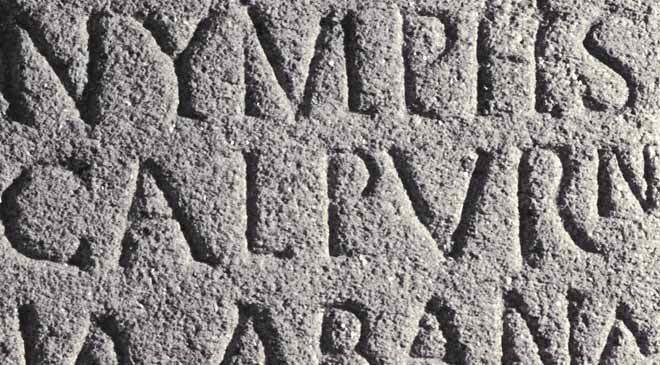
In 1895, the Provincial Commission for Historical and Artistic Monuments of Ourense decided to create a place where the history of the province would be readily available to tourists and locals alike, and where it would be proudly displayed for years to come. Eventually, the museum began taking an active role in local archaeological research, which helped to increase its collections and raise awareness about the area’s past, which spans over two million years. As of April 2012, the museum was closed for renovations. Please check the website for up-to-date information.

The Roman Bridge of Ourense, or Ponte Vella as the locals refer to it, is more of a medieval bridge than a Roman artifact. The original construction was performed by the Romans sometime during the 1st century AD, probably while Emperor Trajan was in power. Trajan was also responsible for commissioning several large-scale building projects throughout the Roman Empire during his reign, including the Alcántara Bridge in Spain, Trajan’s Column in Rome and Trajan’s Bridge at the Danube River in Serbia. Only a handful of stones at the base of the bridge at Ourense date back to the Trajan Era; it was demolished and reconstructed several times beginning in the 12th century.
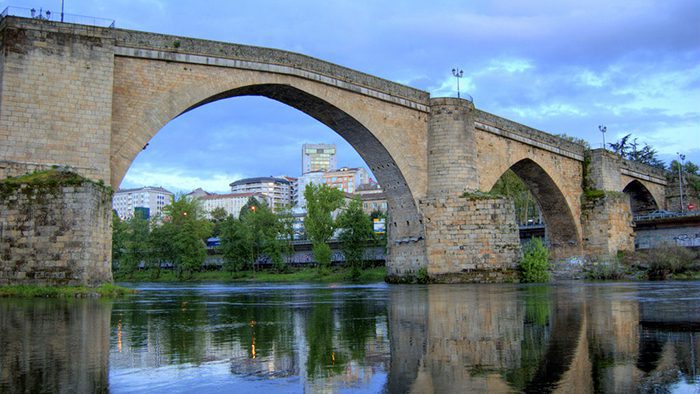
The Roman Bridge of Ourense crosses the Miño River and continues to be a source of pride for the city. This is evident in the Ourense coat of arms, which features an image of the bridge and its old watchtower (the watchtower was taken down during the 19th century). Dozens of people cross the bridge each day as part of their daily routine. From the bridge, striking views can be had of the old town and the Miño River. Entrance is free.
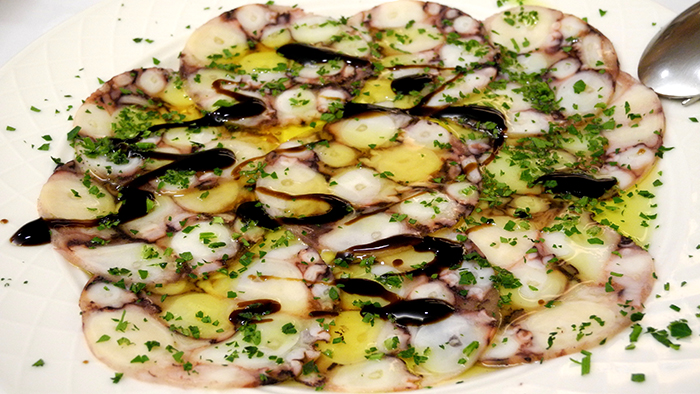
For more than 40 years, Martin Fierro has provided the citizens of Ourense with a varied selection of Galician cuisine. This is the ideal restaurant for someone who has never tried Galician food, and would like to sample several dishes from the region. Galicia-bred beef is consistently ranked the tastiest and highest quality beef in Spain, and Martin Fierro has plenty of it. Although several types of fresh fish are served, grilled meats are the specialty of the house. By searing the tender cuts of pork, lamb and beef on a hot grill, flavors intensify, which is why this restaurant has enjoyed a stellar reputation among locals.
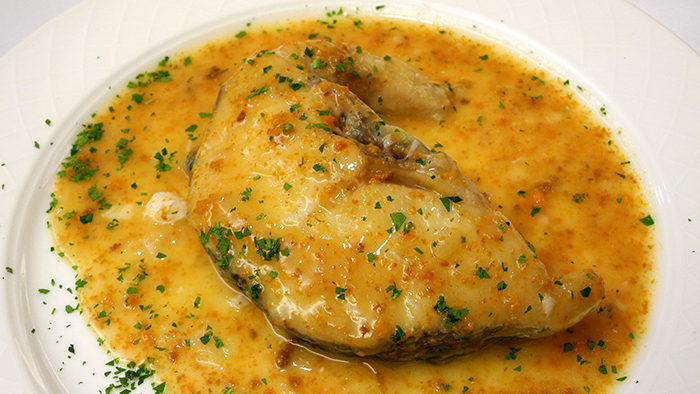
Martin Fierro is conveniently located riverside next to the Pont Vella Centro Comercial, which is the city’s only mall, so it is quite easy to find. It features a spacious, contemporary dining room as well as two private dining rooms for confidential lunch meetings and private functions. The menu has something for everyone with loads of appetizers like empanadas, traditional Galician octopus and sweetbreads with homemade chimichurri sauce. The main courses will make you drool – they include several types of traditional steaks, chops and fish filets. Be sure to pair your feast up with a local red wine to top off the night, and tell them David sent you.
Best time: Lunch or Dinner
Recs: Empanada, mollejas (sweetbreads) with chimichurri, pork loin, cañas filled with pastry cream dessert, homemade vanilla ice cream.
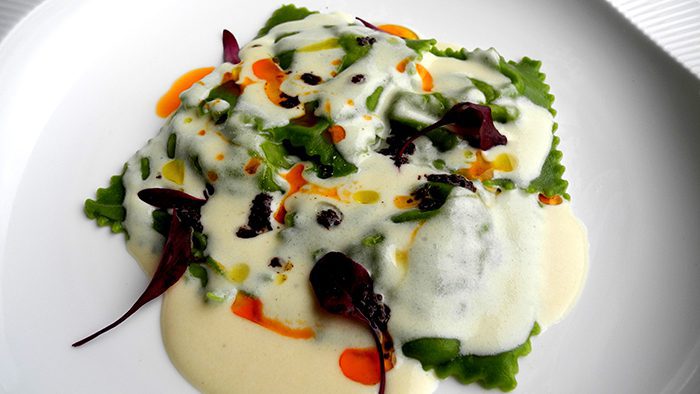
Whoever thought that innovative, fine dining is only available in major cities was very wrong. Galileo is a gem of a restaurant, owned and operated by Chef Flavio Morganti, an Italian-born food mastermind who fell in love with the bounty of Galician sea and soil. Chef Morganti’s dishes are beyond good. They are memorable. A variety of original, super fresh soup, salad, meat, fish, risotto and pasta creations comprise Galileo’s ever-changing seasonal menu.
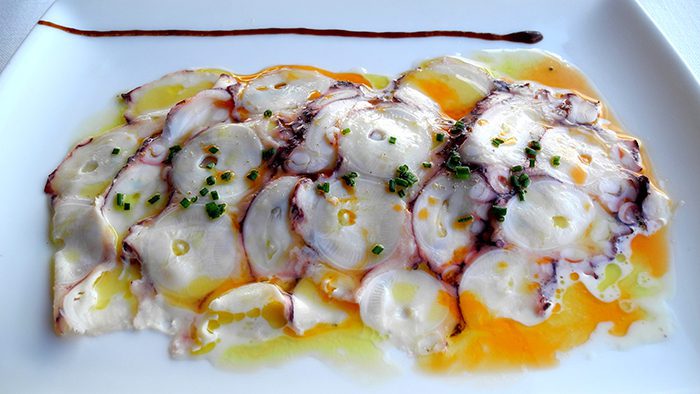
The skill of the dishes, and their imaginative presentation only add to the charisma of the restaurant, which is decorated to the nines with modern furniture, floor-to-ceiling glass windows and custom whimsical murals of spacemen, stars and planets. Service is outstanding in terms of friendliness and professionalism. The restaurant is located in a remodeled 19th century home surrounded by lush countryside – about a 20-minute drive from the center of Ourense. It overlooks a charming green garden of trees and flowering bushes, which gives their guests much appreciated seclusion and harmony.

Chef Morganti exemplifies Galician-Italian fusion cuisine. His work is known throughout the area as progressive and utterly delicious. I have to agree. It is difficult to understand why this restaurant does not yet have a Michelin Star, but if you happen to ask Flavio about that, he isn’t too concerned. His main objective has always been to keep his customers full, but hungry for more. He prides himself on his ability to make local ingredients shine with the latest cooking methods, and I can tell you first hand he is doing a fine job. You shouldn’t miss out on Galileo. Prior booking is a must.
Best time: Lunch
Recs: Chef’s tasting menu (seasonal), Albariño wine.

To dine at Adega do Emilio is to discover what Galician hospitality is all about. Across the Roman Bridge from the Gran Hotel San Martín is where you will find this celebrated establishment. Owner Emilio and his doting staff treat everyone who dines here like one of the family. The restaurant itself is over 100 years old! Exposed ceiling beams, antique farming equipment uncovered during remodeling and original stone walls will make you feel as though you were transported into a turn of the century farmhouse (except for all the modern amenities, of course).
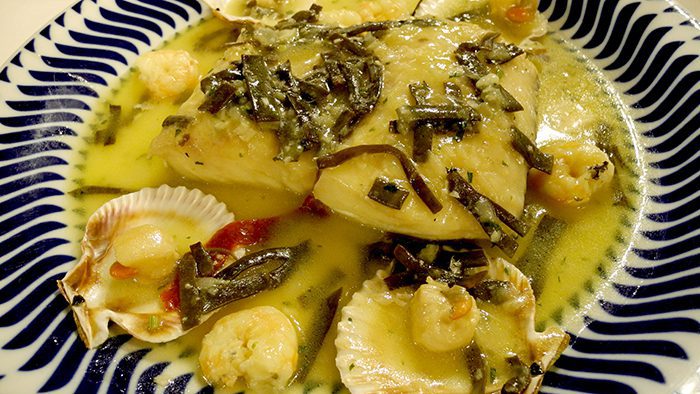
When the weather is pleasant, diners flood the outdoor terrace to enjoy grilled steaks, cocktails or their midday coffees. During colder months they can relax at a cozy table in one of the indoor dining rooms, both of which are rustic and elegant. The menu features always-satisfying classics like pulpo a feria (octopus) and merluza a la Gallega (hake fish) as well as other signature house dishes like baked clams and tender steaks. Emilio is somewhat of a local celebrity in town, and continually strives for excellence in the kitchen and through his warmhearted interactions with clients. He manages to keep his restaurant consistent with food quality and genuine customer service, despite his competitors.

The setting itself could not be any more authentic with the dark furnishings and inviting atmosphere. It is no wonder why locals choose this eatery as a place to celebrate birthdays, anniversaries and other memorable moments. The intimate setting and timeless Galician fare is just what one needs to relax with loved ones while enjoying an exceptional meal.

The word adega means winery in Galician, so you know what they have got plenty of (hint, hint). But do not forget to end your meal with a sampling of chupitos, which are traditional Galician after-dinner liqueurs. They are sure to warm you up on a cold night and make the walk back to your hotel seem shorter than the walk to dinner. Adega do Emilio is open everyday except Mondays from 1:00 p.m. – 3:45 p.m. and 9:00 p.m. – 11:45 p.m. Prior booking is recommended, especially for large parties.
Best time: Dinner
Recs: Empanada de xoubas (sardines), clams in mushroom and garlic reduction, pan seared merluza with scallops, pork with Roquefort cheese and butter reduction in puff pastry shell, apple pudding dessert.
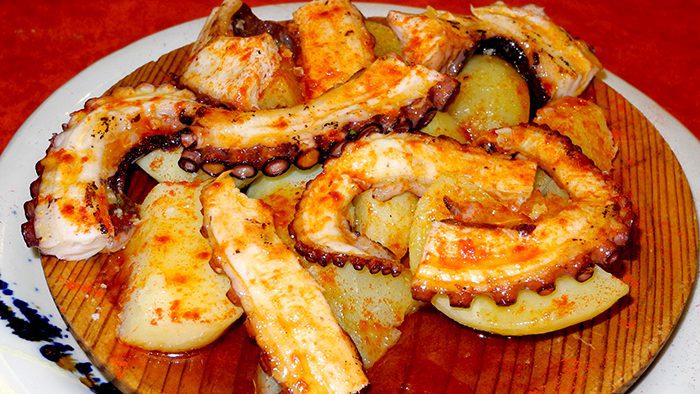
Change is good and when you need to mix it up, head to El Asador de Roa for the perfect selection of Castilian favorites. Like Galician food, dishes from the Castilian-Leonese region are filling and hearty. Pork, veal and legumes are standard ingredients. Galician fare, although largely comprised of seafood dishes, also incorporates several meat, sausage, chicken and vegetable dishes. This restaurant has a broad selection from both sides of the Spanish spectrum and serves guests generous portions of each lip-smacking dish. It also features a well-selected wine list to pair with your food. The downstairs bodega even doubles as a private dining room for parties of 20.

The wood-burning oven at the front of the restaurant is its signature asset. It is used to prepare hundreds of cochinillos, suckling pigs, during the summer months. Cochinillo is a hallmark specialty in Castilian cuisine and a celebratory food on many occasions including Christmas Eve. When the restaurant isn’t taking special orders, the kitchen is where the real magic happens. It is where juicy steaks, sausages, sweet breads, lamb chops, bull tail and octopus get seasoned and roasted to sublime perfection before being whisked to your table.

This is “food from the fire,” as the chef likes to say, and is definitely for the hungry. The menu changes two to three times a year to incorporate the best meats and produce from each season, and for the budget-conscious there are pre-set menus available for €25, €28 and €30 per person. In all, Asador de Roa offers a wide selection of Spanish favorites at affordable prices in a casual setting. Do you really need another excuse to go? I think not.
Best time: Dinner
Recs: Empanadas caseras, pulpo Gallego, entrecote with hand-cut French fries, baked codfish with alioli and creamed spinach, filloas (crepes) filled with chocolate mousse and cream dessert.

For those who have been to Spain before, Galicia is surprisingly different from the rest of the country. With its own culture, language and cuisine, Galicia enchants those who appreciate authentic hospitality and good food and wine. Ourense is an ideal starting point to begin exploring Galicia because it is one of the region’s largest cities and can be easily explored on foot. The thermal waters of Ourense are by far the main attraction because of all the places one could go to unwind, relax and take in the beneficial minerals of the water. And with a train to take you to the thermal route, there really is no excuse not to go. Nothing makes a chilly day better than a dip in a steamy pool of natural thermal water. For those who want to experience the thermal baths in luxury, it is important to pre-book your desired activities at either A Chavasqueira Baths or Outariz Baths. Both are set in modern facilities designed to pamper and soothe stresses away.
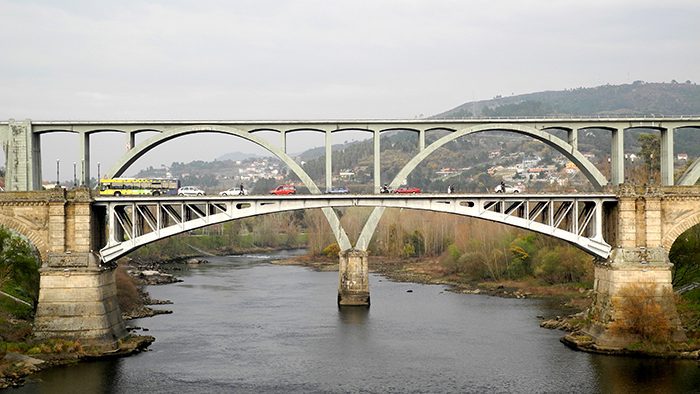
The single best piece of advice that I could give you about Ourense (and the rest of Galicia for that matter) is to get out! I mean get in the car and drive. There are so many small towns in the area that you could explore in such a short amount of time. Each has its own treasures, from past and present, that it would be a shame to miss out on them. Oh, and the wine! DO NOT miss out on the plentiful wine in the area. You’ll pay triple the local price for a bottle of Ribeiro wine in any other country, so be sure to try and buy the ones you love the most while you’re in one of the best wine-producing areas of Spain. You will probably encounter at least one peregrino, or pilgrim, on the way to Santiago de Compostela. These people travel a long way, and the journey is hard work. If the spirit moves you go ahead and bestow words of encouragement. A common one is “¡Buen camino!”
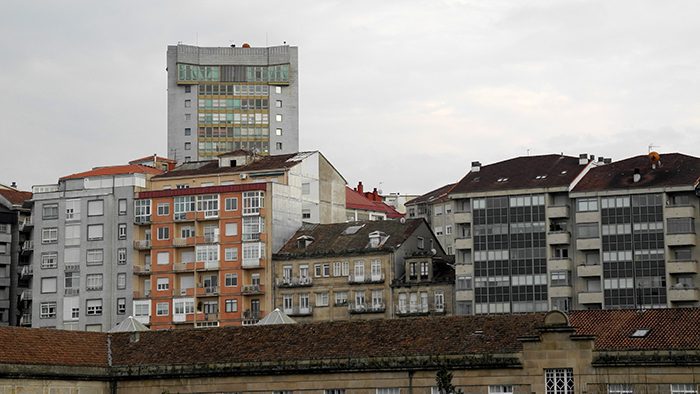
When eating in Ourense, it is important to consider the culture of dining here. For all of you early birds, you may want to keep snacks handy because dinner is not served until quite late for North American standards. It is rare to find a restaurant that opens for dinner before 8:30 pm because locals do not dine until around 9 pm. But on a positive note, the food is utterly delicious! Enjoying Galicia to the fullest doesn’t take a lot. Be open to new experiences and you will quickly realize that you are surrounded by some of Europe’s most pleasant people and some of the world’s tastiest wine.

Have you visited Ourense? Do you like our list of what to see and eat in Ourense?
Counter
101 Countries • 1432 Cities